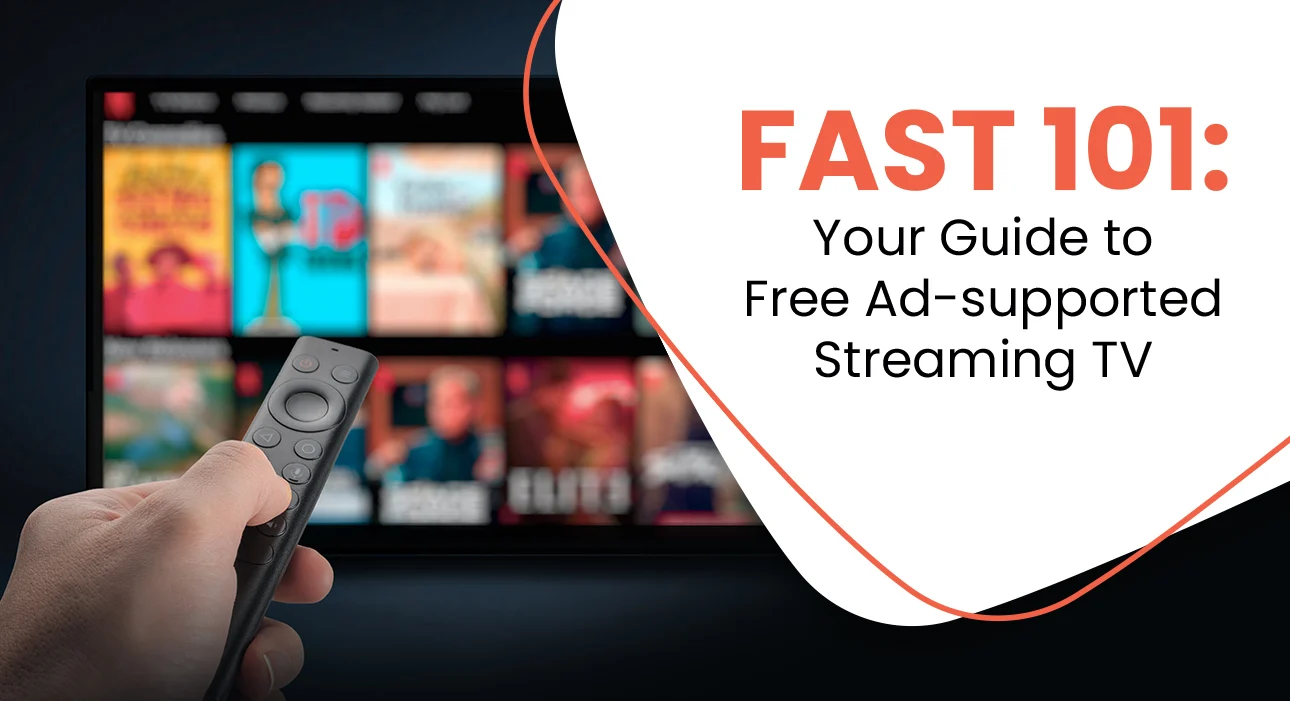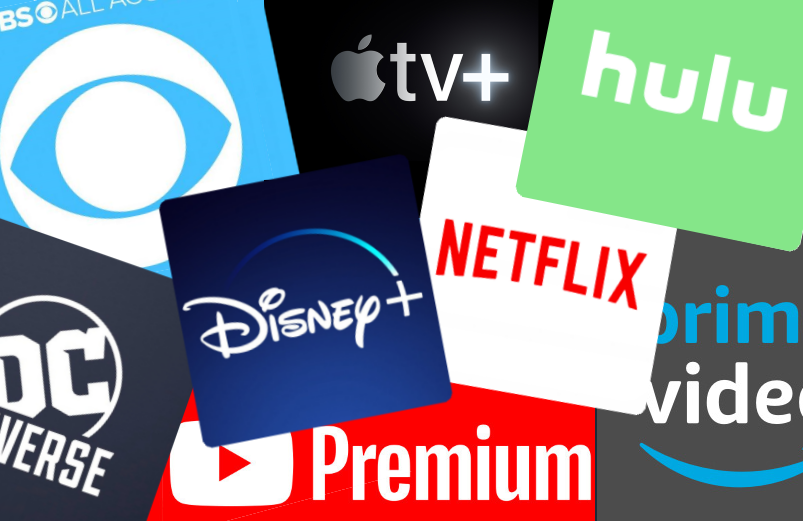
Introduction to free streaming platforms and ad-supported content
Are you one of the millions who enjoy streaming your favorite shows and movies for free? Well, you’re not alone! Ad-supported content and free streaming platforms have taken the digital world by storm, offering endless entertainment at our fingertips. But have you ever wondered how these platforms manage to offer all this content without charging a penny? The answer lies in the crucial role of ads. Let’s dive into the fascinating world of ad-supported content and explore how it fuels the sustainability of free streaming platforms!
The role of ad-supported content

Free streaming platforms have become immensely popular, offering users access to a vast array of content without any subscription fees. However, the sustainability of these platforms relies heavily on advertising revenue. Ads play a crucial role in offsetting the costs associated with providing free content to users. By partnering with advertisers, streaming platforms can continue offering their services without charging users directly with the support of ad-supported content.
Ads come in various forms on free streaming platforms – from video ads that play before or during content to banner ads displayed on the interface. These ad-supported content advertisements not only generate revenue but also provide brands with an opportunity to reach a highly engaged audience.
Targeting and personalization are key aspects of ad placement on these platforms. By analyzing user data and preferences, advertisers can tailor their ads to specific demographics or interests, maximizing the effectiveness of their campaigns.
Despite the benefits of ads for sustaining free streaming platforms, there are challenges such as ad blockers and user experience concerns that need to be addressed for optimal monetization strategies.
Types of ads used on free streaming platforms

When it comes to free streaming platforms, ad-supported content play a vital role in sustaining their services. These platforms utilize various types of ads to generate revenue while offering content for free to users.
One common type of ad is the pre-roll ad that plays before the selected content begins. These short video ads allow advertisers to capture the viewer’s attention right from the start.
Another popular form of advertising on streaming platforms is display ads. These are typically banners or pop-ups that appear on the screen during breaks in the content, providing visual exposure to viewers.
In-stream ads are also widely used, seamlessly blending into the content by appearing at natural breaks like between episodes or during pauses in music playlists.
Sponsored content is another effective advertising method where brands collaborate with creators to integrate products or messages into the actual content itself. This native approach can be more engaging and less intrusive for viewers.
By incorporating a mix of these ad formats, free streaming platforms can continue offering valuable content without compromising user experience.
Targeting and personalization in ad placement
One of the key advantages of ads on free streaming platforms is the ability to target and personalize ad placement. By leveraging user data and preferences, advertisers can tailor their ads to specific audiences, increasing the relevance and effectiveness of their campaigns with ad-supported content.
Targeting allows for ads to reach users who are more likely to be interested in the products or services being advertised. This not only benefits advertisers by improving conversion rates but also enhances the overall user experience by showing relevant content with ad-supported content.
Personalization takes targeting a step further by delivering customized messages based on individual preferences and behavior. This level of personalization creates a more engaging and impactful ad experience for viewers, leading to higher engagement rates and brand recall.
Targeting and personalization play a crucial role in making ads on free streaming platforms more effective for both advertisers and users alike for ad-supported content.
Challenges faced by free streaming platforms in implementing ads
Free streaming platforms face various challenges when it comes to implementing ads effectively. One major hurdle is striking the right balance between ad revenue and user experience. Too many ads can drive users away, while too few may not generate enough revenue to sustain the platform.
Another challenge is ensuring that the ads are relevant and non-intrusive. Users are more likely to engage with ads that align with their interests, so targeted advertising is crucial. However, there’s a fine line between personalized recommendations and invasive tracking practices that can turn users off.
Moreover, ad blockers pose a significant challenge for free streaming platforms. Many users install ad-blocking software to avoid interruptions during their viewing experience, impacting the platform’s ability to monetize through advertisements in ad-supported content.
Additionally, competition from subscription-based services adds pressure on free streaming platforms to find innovative ways to attract advertisers while retaining viewership. Adapting to changing consumer behaviors and preferences in an increasingly crowded market further complicates this landscape.
Benefits for advertisers and users
Advertising on free streaming platforms offers a win-win situation for both advertisers and users. For advertisers, these platforms provide a cost-effective way to reach a vast audience of engaged viewers. With the ability to target specific demographics and interests, ad-supported content can be tailored to reach the right people at the right time.
On the other hand, users benefit from access to high-quality content without having to pay subscription fees. Ads help subsidize the costs of operating these platforms, ensuring that users can continue enjoying their favorite shows and movies for free.
Moreover, targeted ads enhance user experience by showing relevant content that aligns with their preferences. This personalization not only makes ads more engaging but also reduces irrelevant interruptions during streaming sessions.
Additionally, for advertisers, ad-supported content allows for better tracking and measurement of campaign performance. By analyzing metrics such as click-through rates and conversion rates, they can optimize their strategies in real-time for maximum impact.
The symbiotic relationship between advertisers and users on free streaming platforms showcases how effective monetization strategies benefit all parties involved.
The future of ads on free streaming platforms
As technology continues to evolve, the future of ads on free streaming platforms is poised for exciting advancements. With the rise of AI and machine learning, advertisers can expect more sophisticated targeting capabilities, delivering personalized ad experiences to viewers. This means ads will become more relevant and engaging, enhancing the overall user experience.
Furthermore, we can anticipate the integration of interactive ads that allow users to engage with content in new ways. Imagine being able to shop directly from an ad or choose your own adventure within a commercial break. These immersive experiences have the potential to revolutionize how brands connect with their audiences.
Additionally, as consumers increasingly seek authenticity and transparency from brands, we may see a shift towards more native advertising on free streaming platforms. By seamlessly integrating branded content into programming, advertisers can create a more organic connection with viewers.
The future of ads on free streaming platforms holds endless possibilities for innovative monetization strategies that benefit both advertisers and users alike.
Conclusion
In the fast-paced digital era, ad-supported content has become a cornerstone of free streaming platforms’ monetization strategies. These platforms have revolutionized the way we consume media by offering a plethora of entertainment options at no cost to users. The crucial role of ads in sustaining these platforms cannot be overstated.
From pre-roll and mid-roll ads to display and native ads, free streaming platforms leverage various types of advertisements to generate revenue. By targeting and personalizing ad placement, they enhance user experience while maximizing advertising effectiveness. However, challenges such as ad fatigue and ad blockers persist, requiring innovative solutions from platform providers.
For advertisers, free streaming platforms offer invaluable opportunities to reach highly engaged audiences with tailored messages. Users benefit from access to high-quality content without subscription fees, supported by relevant ads that may align with their interests. As technology continues to evolve, the future of ads on free streaming platforms holds promise for even more sophisticated targeting capabilities and seamless integration.
The symbiotic relationship between ads and free streaming platforms underscores their mutual significance in today’s digital ecosystem. As these platforms continue to evolve and adapt to changing consumer behaviors and technological advancements, one thing remains clear: ad-supported content is here to stay as a vital component of sustainable monetization strategies for years to come.
For more websites that provide ad-supported content, click here. For more Hollywood and technology related news, visit QAWire.

